Objetos-crônica
Here's a collection of objects I made in 2024.
Objects are traces of the environment we're immersed in. By following the network of actors that led to its creation, we can read off the contingencies from which they emerged. This layer of meaning on top their functional parti pris is exuberance.
A wrist band for a Timex.
I rarely wear watches, but have wanted to introduce one back into
my life to experiment with my relationship to time. I had bought a
cheap Timex back in college, after a recommendation from Ben. Late
November, I wore it to lunch with Rafa at Paulinho's and lamented
the rather bland leather wrist strap that come with the watch. I
wondered about using some leftover webbing from a previous project.
The next morning, I saw that the width was perfect. An hour later I
had it ready.
→

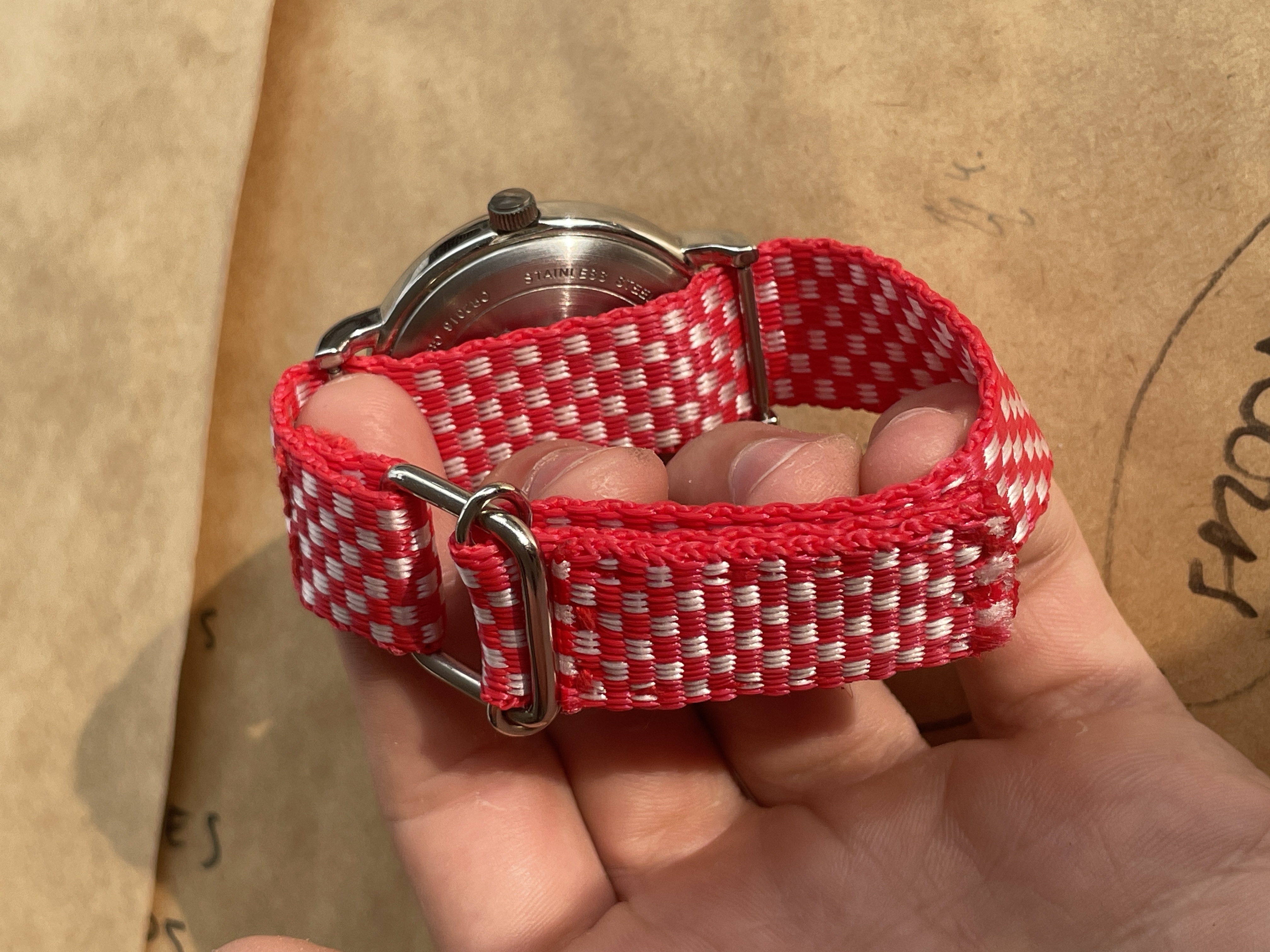
A spoon keychain,
with San Cristóbal.
Leo runs Casa das Três Meninas, a third-generation hardware store
in my neighborhood, Santa Cecilia. As an artist, he does a lot of
work with welded household items, but what caught my attention was
his keychain. I stopped by a kitchen supplies store and bought a
spoon to make my own. After using it for a few days, the object
suggested itself as a kind of altar. I'm not religious, but
remembered that my namesake is the patron saint of travel. My mom
suggested going to Rua Barão de Paranapiacaba, a whole block that
just sells silver jewelery, to find a pendant. Earlier in the
year, Luca had showed my some nail-polished Durepoxi sculptures he
had made. I combined both, and spent several hours learning how to
manipulate acetone and nail polish.
→
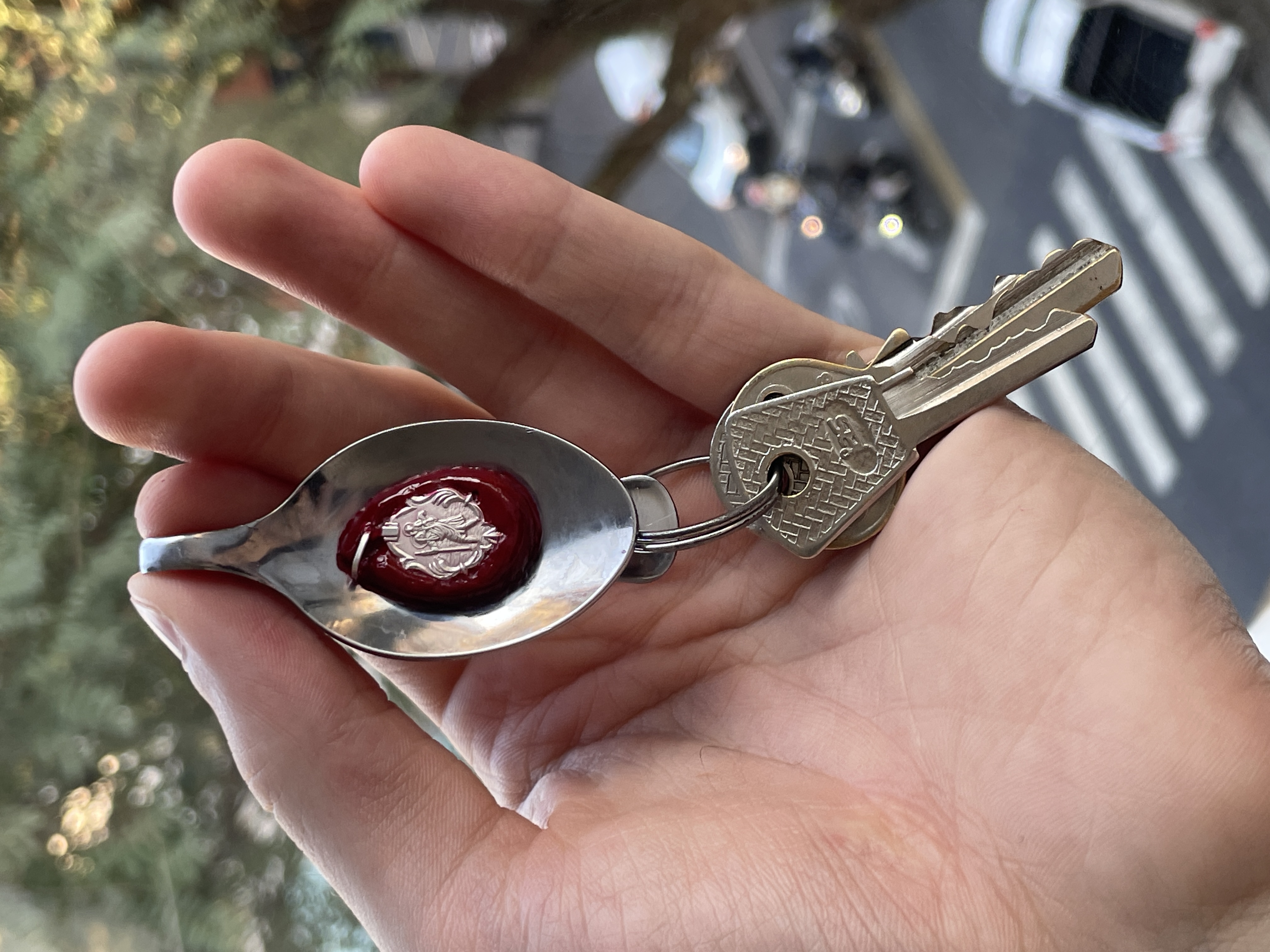
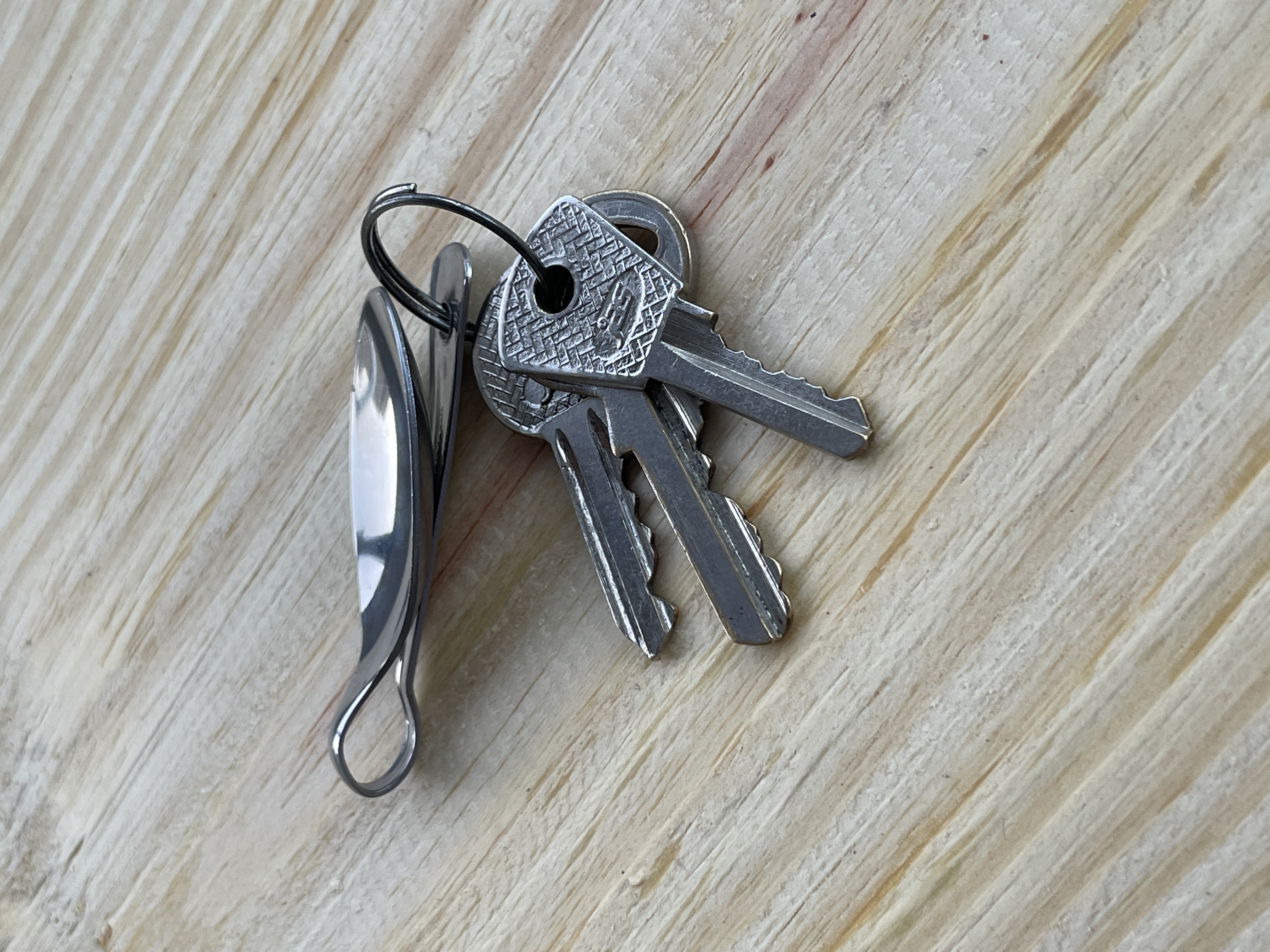
Parentesi, versão Gambiarra.
I was shown Achille Castiglioni's Parentesi lamp last year by XY. I
don't recall why, but one evening I wondered if I could reproduce
its locking mechanism using IRWIN QUICK-GRIPs. I jerry-rigged a
version, hung the webbing from my shower's aluminum structure, used
a leftover brick as a counterweight. A mug was needed to
counterbalance the offset of two clamps to one. The next day I went
to the hardware store to make a slightly more elaborate version to
have as a bedside lamp. To hang it from my ceiling, I used a tie
knot on an attrociously installed hook. Since picking up outdoor
climbing, I learned that this simple mechanism is the basis for all
climbing hardware, including the ATC belay device I use to secure
others, or rapel myeslf down hundreds of feet of rock.
→
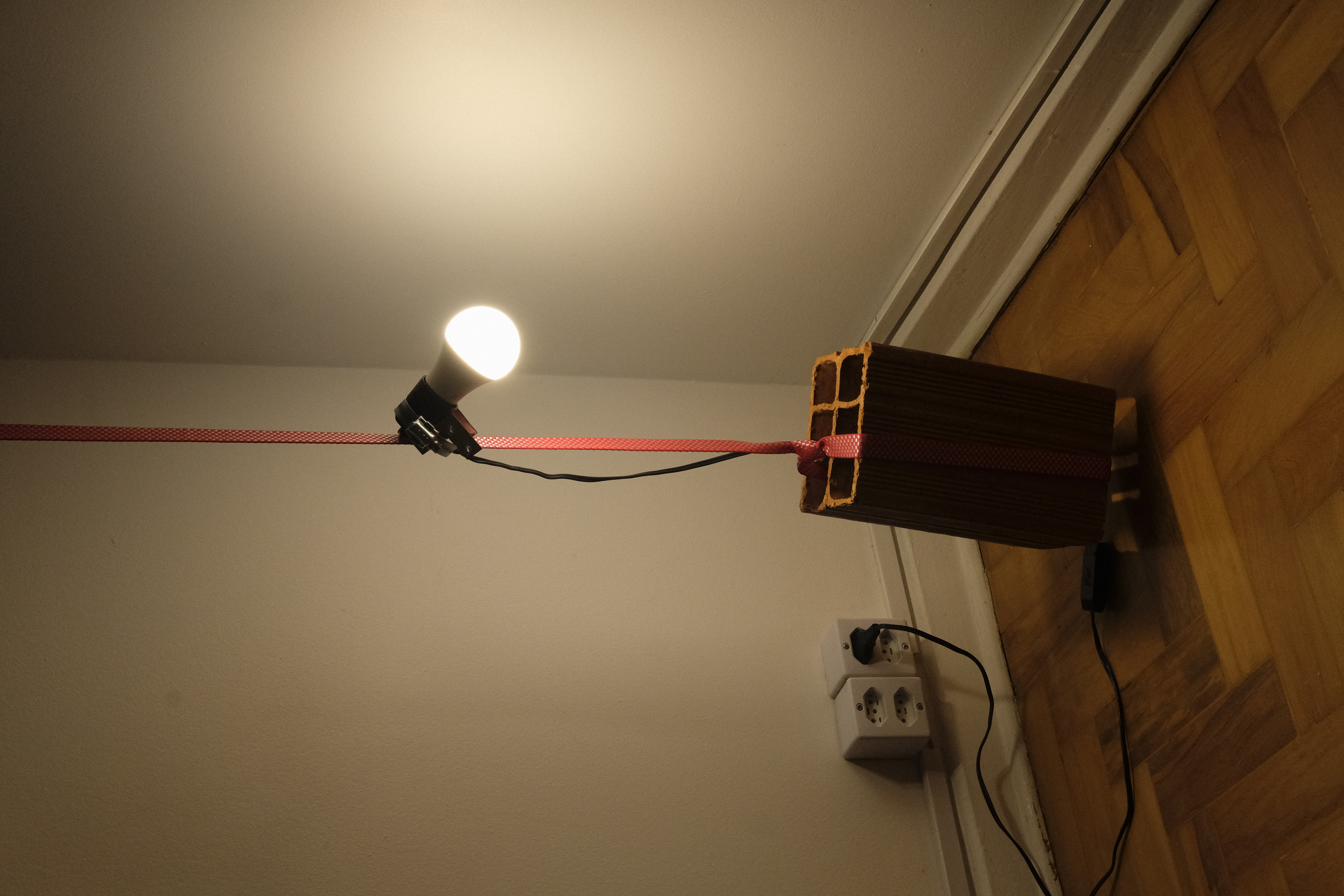
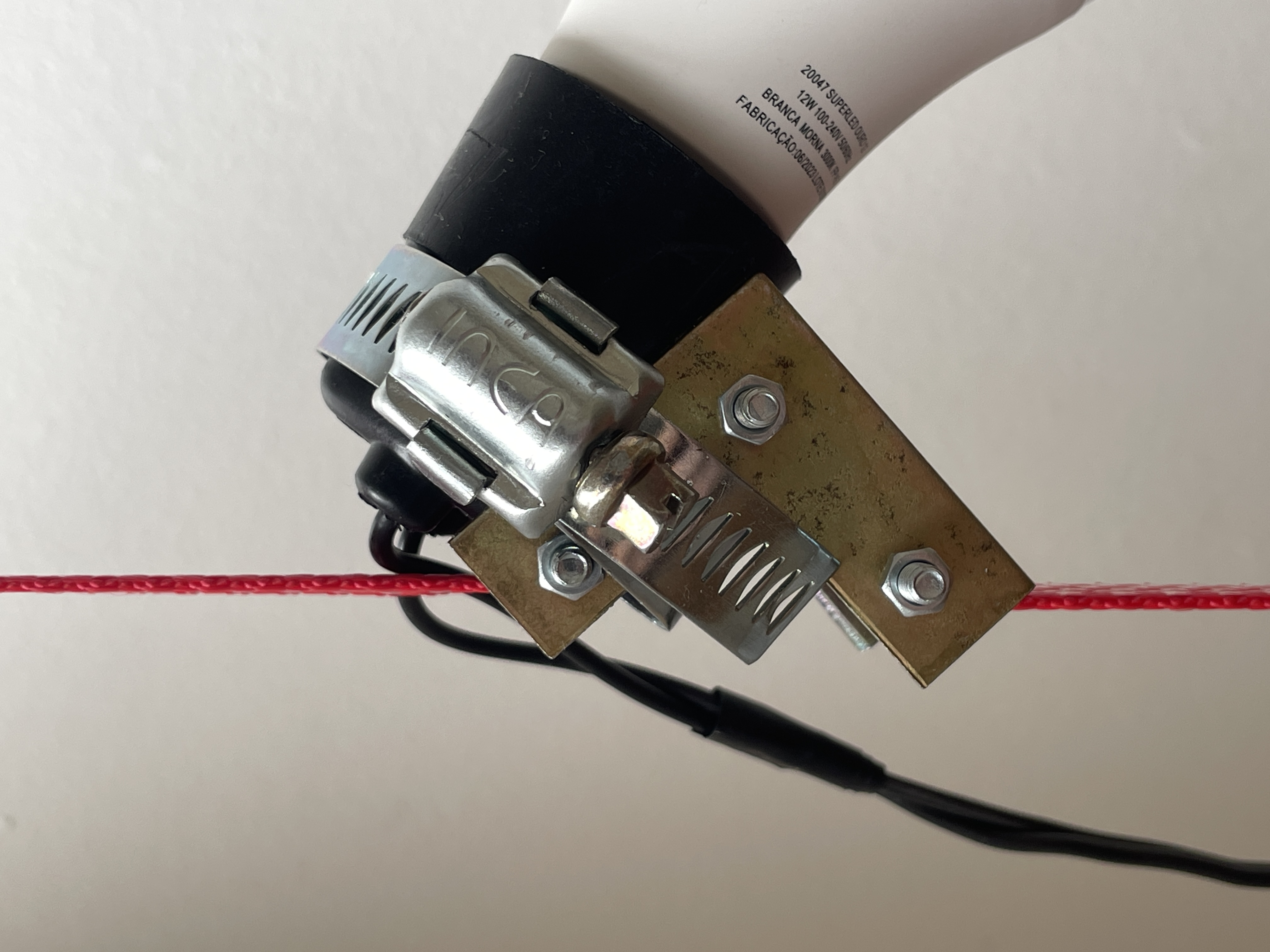
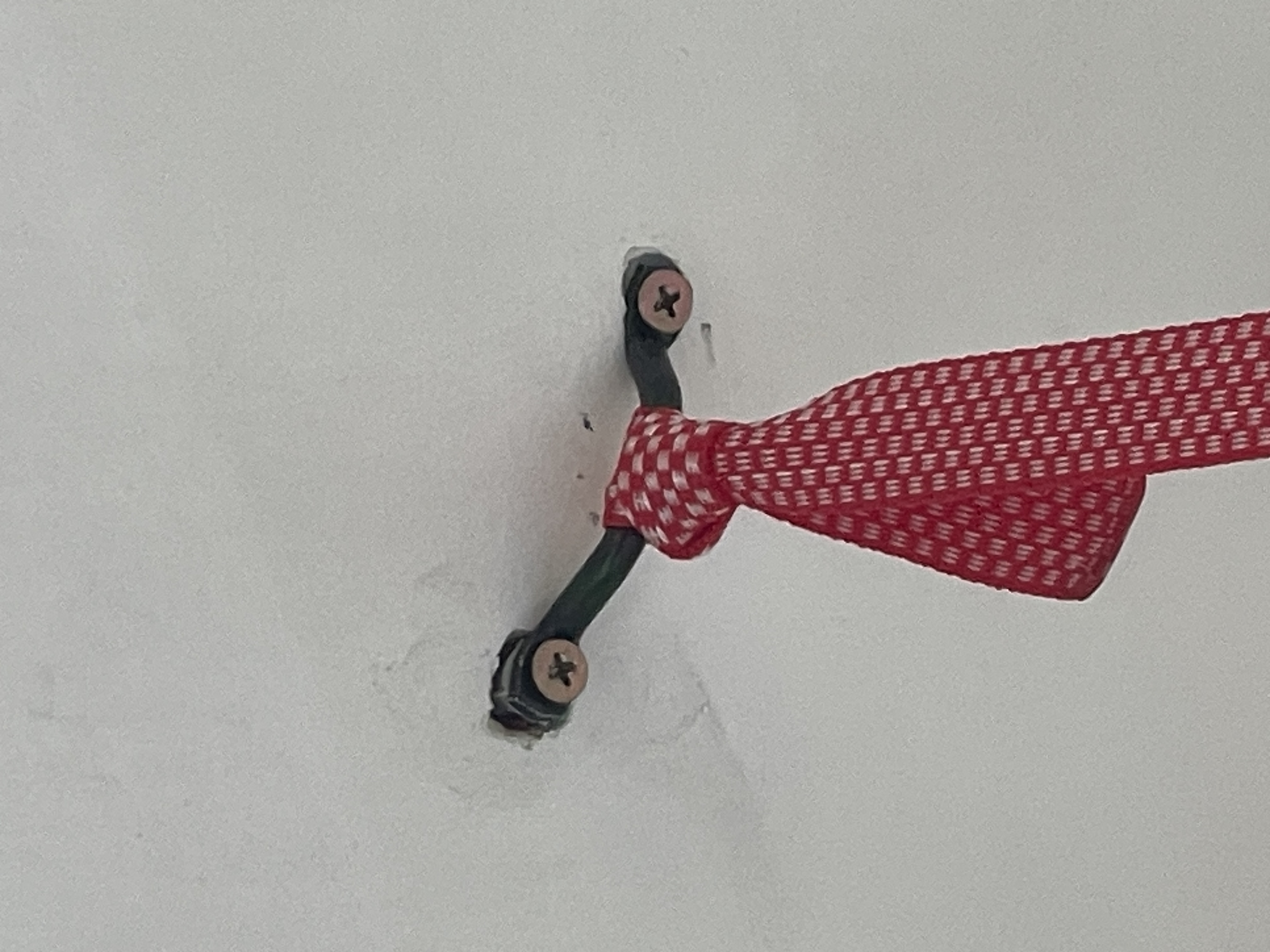
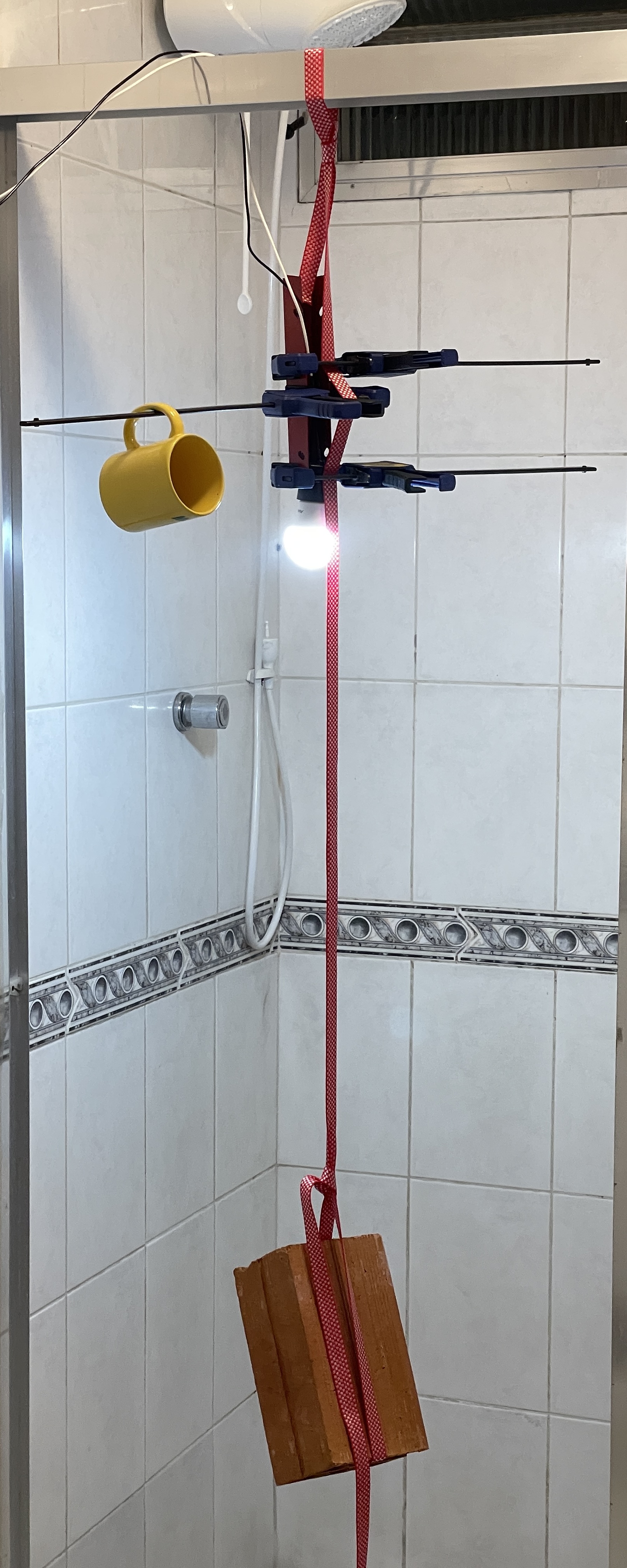
A hanging bar of soap
At the home my grandfather built in zona sur of Rosario,
there's a magnetized soap holder fixed under the bathroom mirror.
He would hammer a bottle cap into the soap to stick it into place.
At Sam Chermayeff's home, he hung his soap from the ceiling using
some thin rope; much less ergonomic. Merging the two, I came up
with this more industrial version to keep the soap dry and
accessible.
→
Bookshelf and tile kitchen.
After moving, I needed to buy kitchen furnishings. Having visited
Sam Chermayeff's home the previous year, I was curious to play with
the idea of a deconstructed kitchen. The pretext was that if I kept
it light and portable, then it'd be easier to move elsewhere when
my lease was over. These metalic bookshelves are extremely common
and cheap to acquire. Walking along Av. São João, I saw a red
enamled version and bought it. I decided to chop it in half to
expand the surface area and allow light to filter in. I then paid
homage to Chermayeff's tile table that we had at the Reduct office
in San Francisco.
→
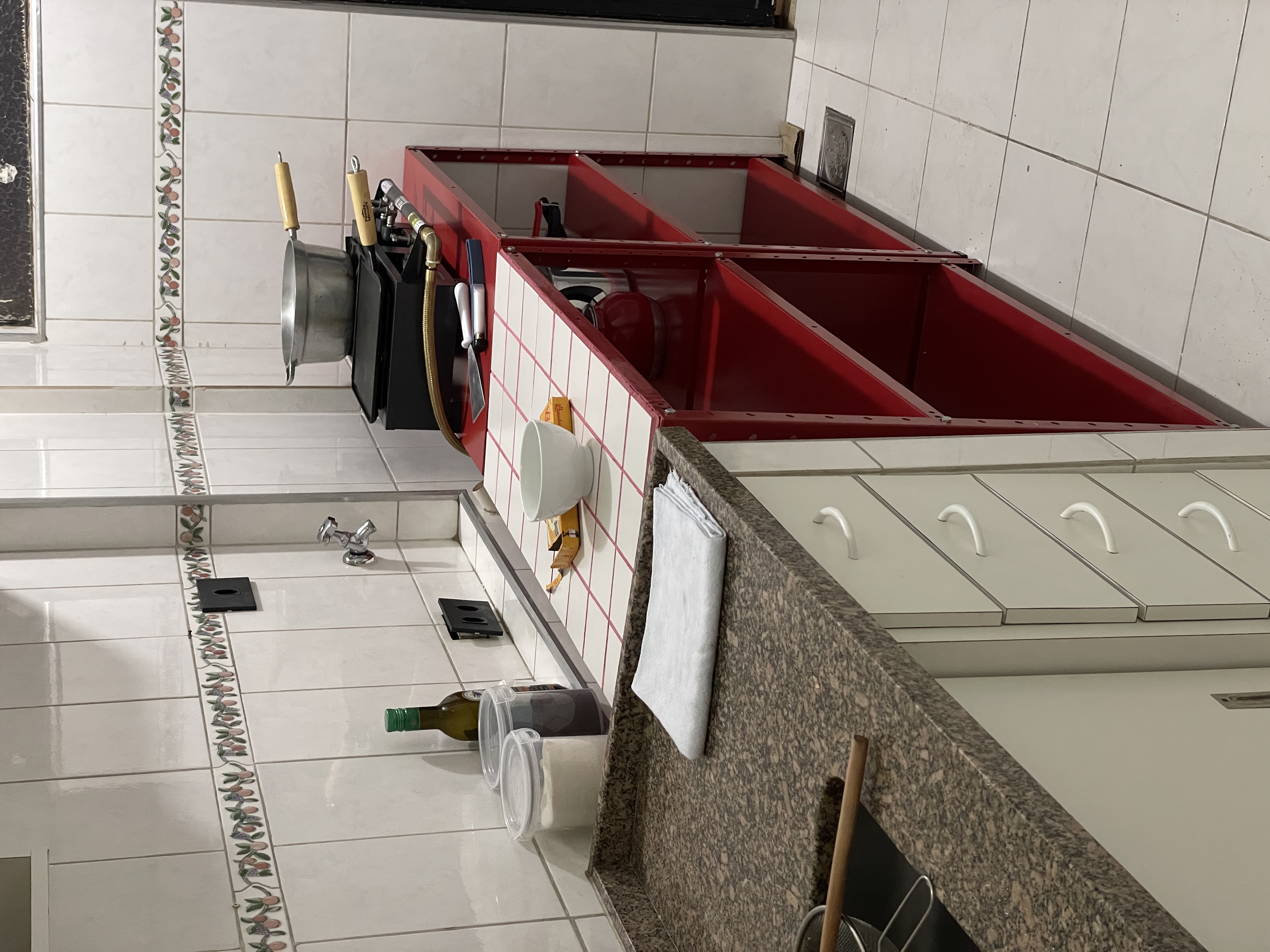
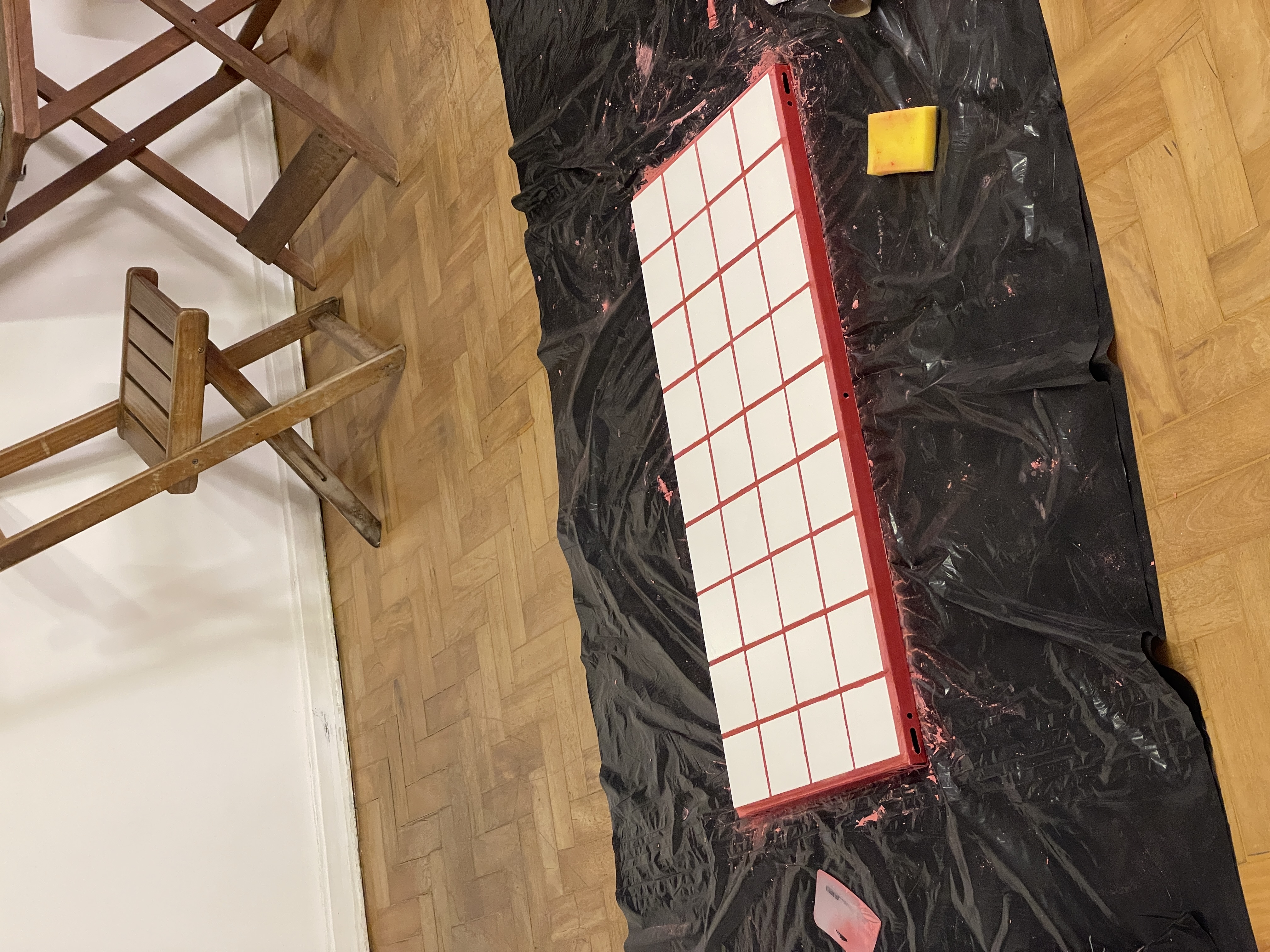
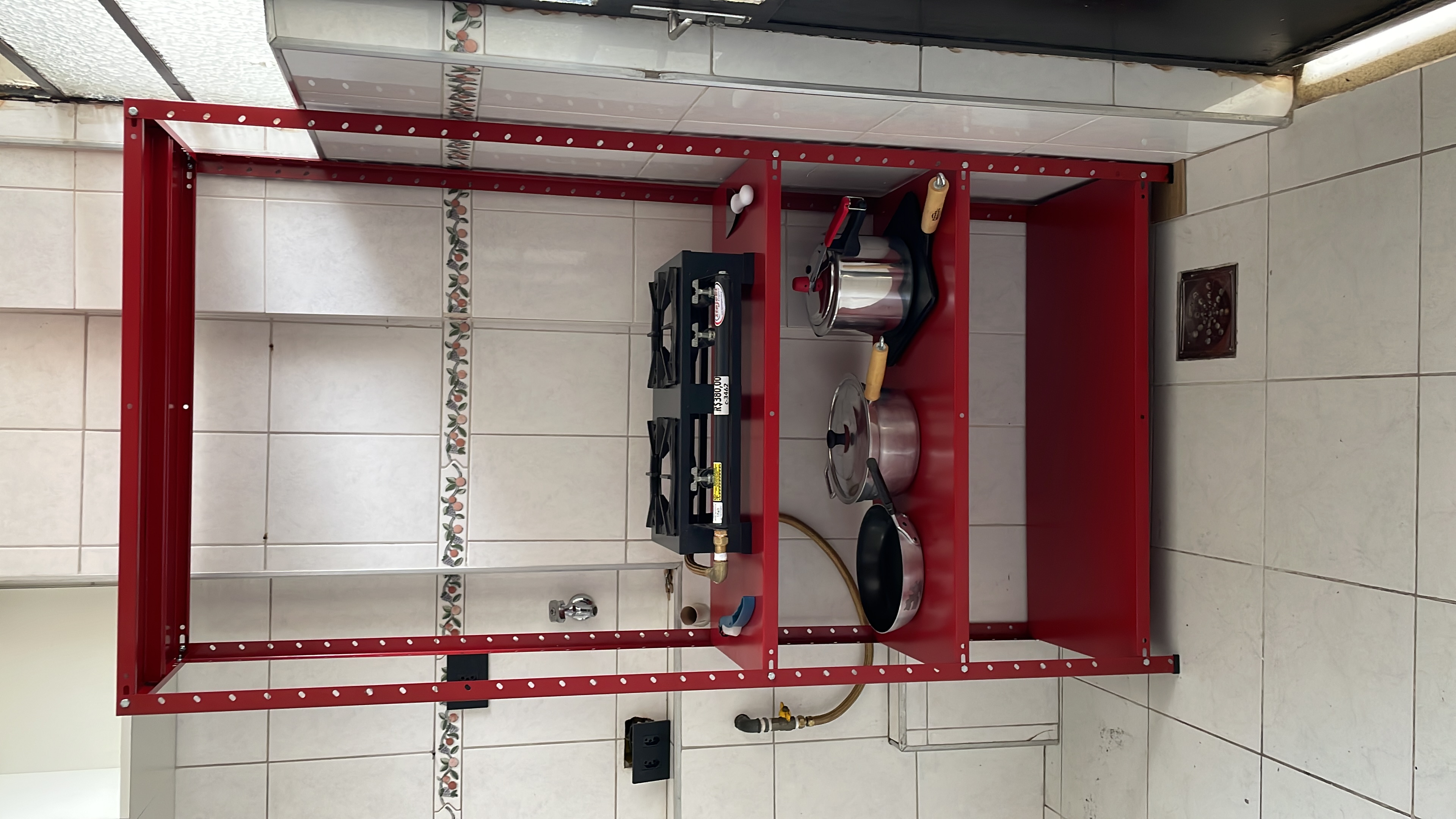
Flavin and Brancusi lamp.
This was the first object I made for my new apartment. I wanted a
light source beyond the gare built-in ceiling lights, and so I
thought of a lamp designs I could cobble together from what I had
at hand. I had bought a bunch of "tijolo baianos" (bricks) to play
around sculpturally with, and just stuck a tube into the corner. It
reminded my of a Flavin sculpture and Brancusi's Bird in Space.
→
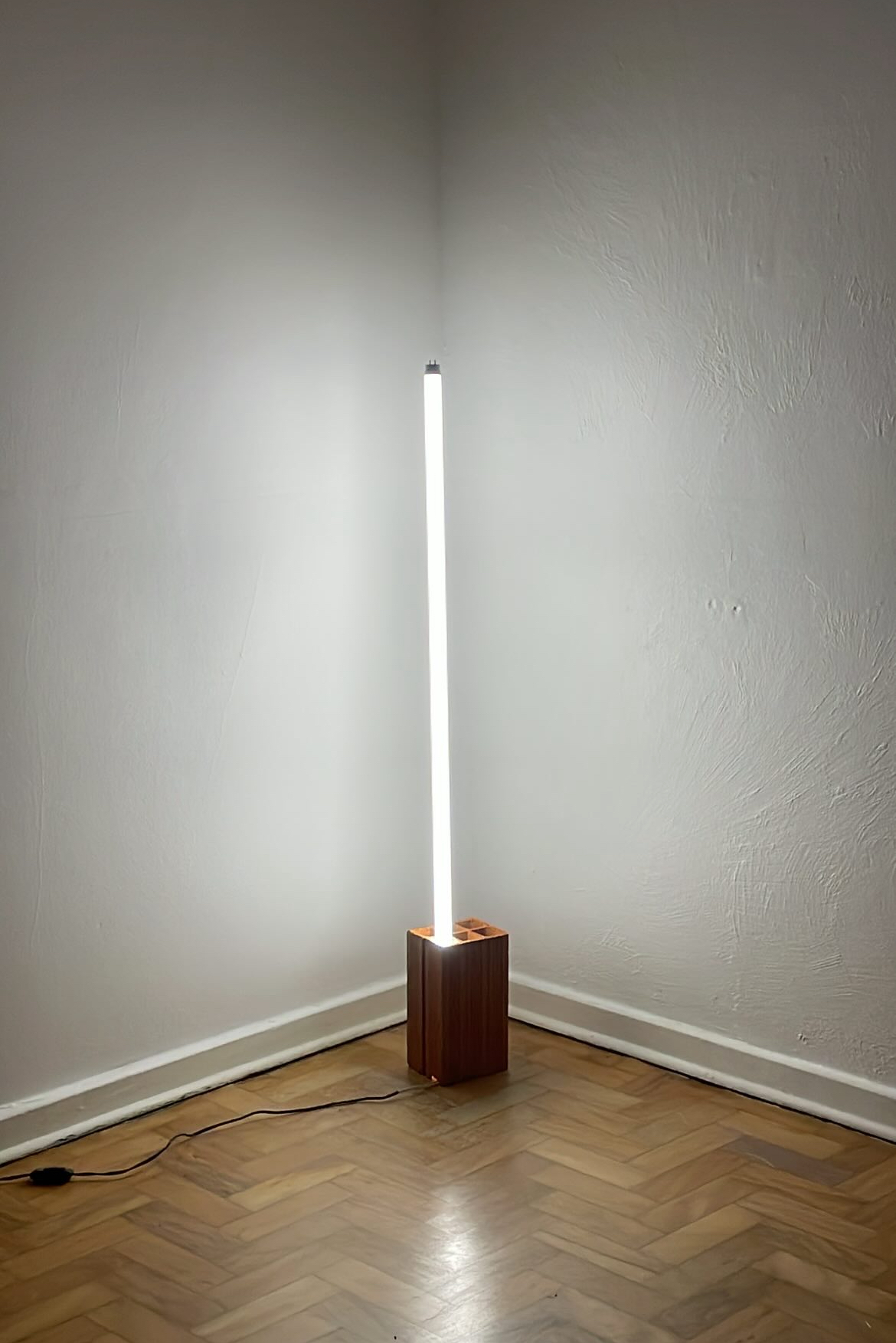
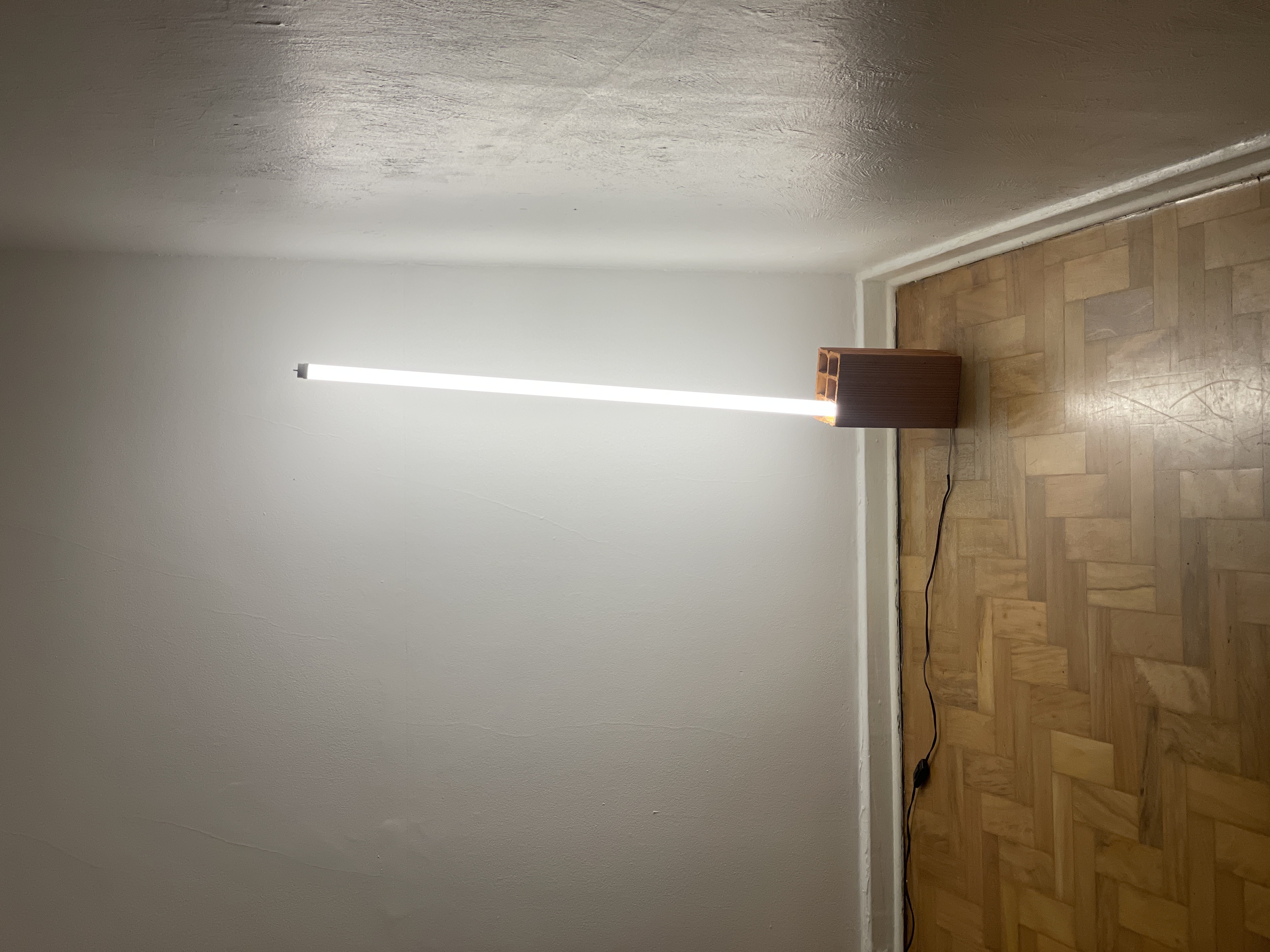
Hippo bench and bedframe.
I've been making furniture in Enzo Mari's autoprogettazione
tradition of simple lumber for several years now. I find the
constraints powerful both for their accessibility and
expressiveness, and often doodle new permutations when I'm bored in
class. Having seen some of Lina Bo Bardi's benches and some
indigenous furniture that mimicked animals, I came up with a design
that inclined the seats inwards and left a bit of room below the
horizontal boards, which reminded me of a Hippo. I was also
inspired by the versatility of use of the "banco dos bichos" at
FAU-USP, which functions between bench, bed, and table, often all
at the same time. Later on, I turned the design into a bedframe for
guests.
→
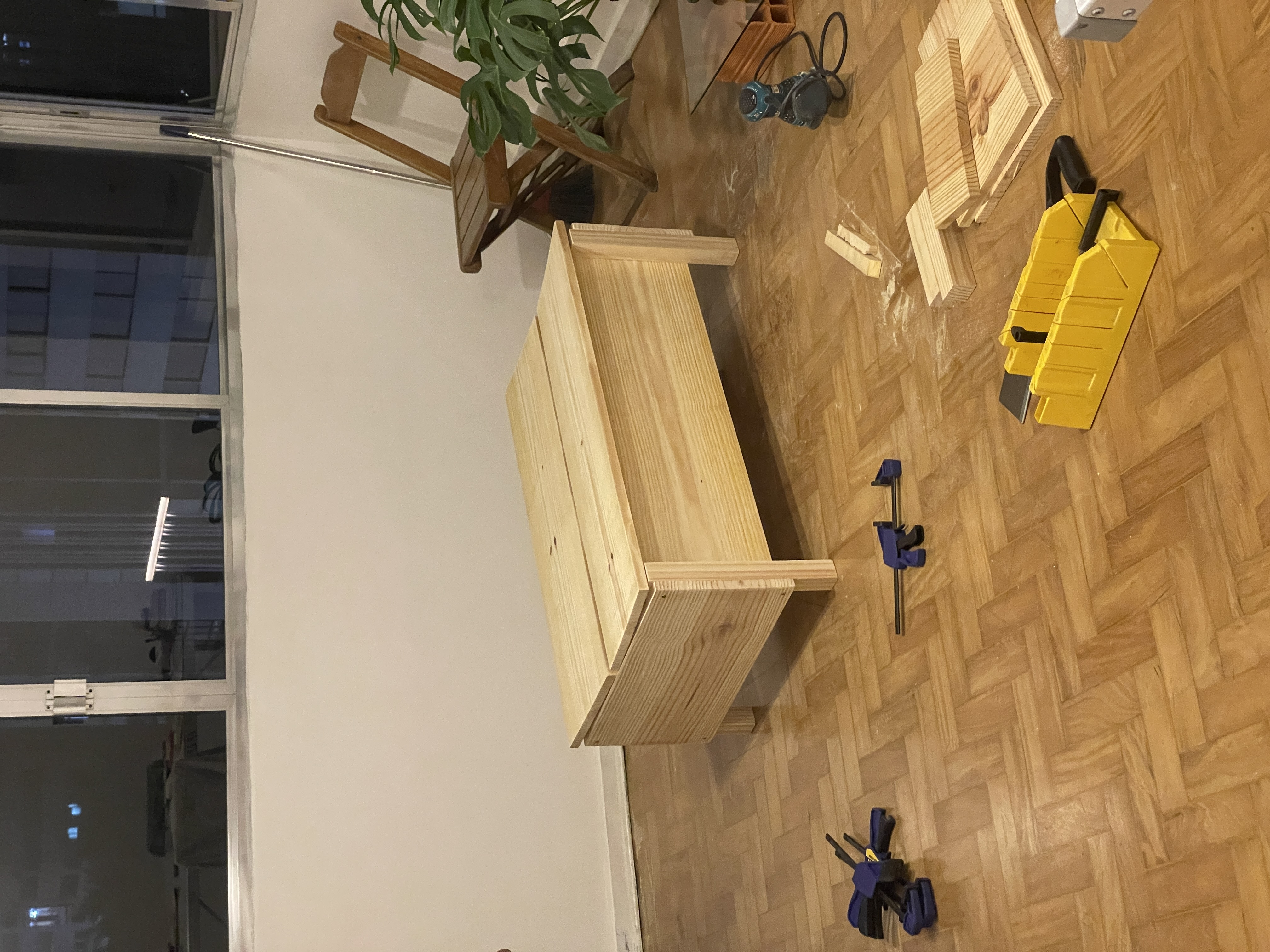
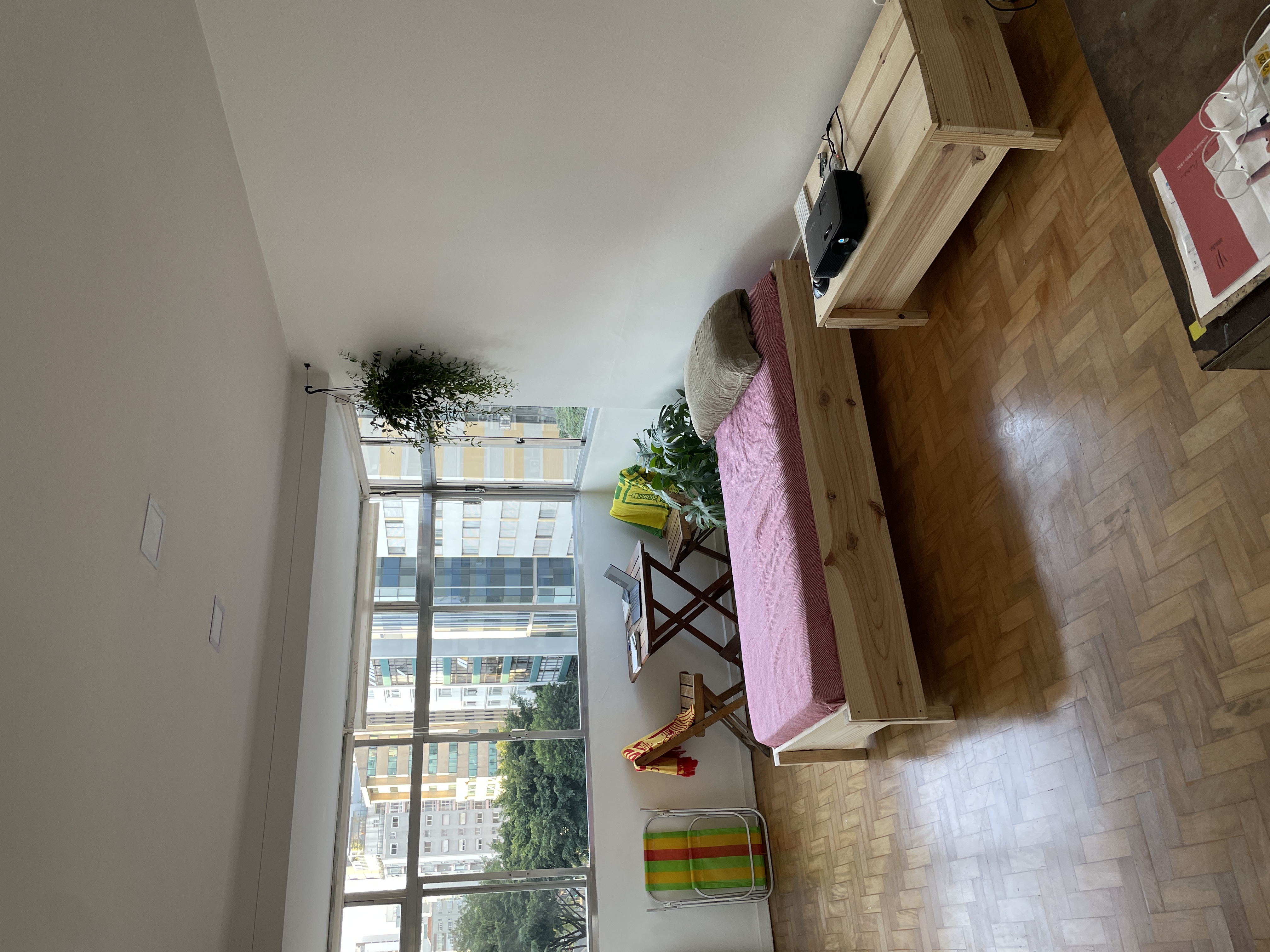
PIBESP 001.
PIBESP is the Programa de Instalação de Bancos no Estado de São
Paulo. Continuing the work I had done with Convivial Forms in
NYC, we made a benches for the plaza in front of Artacho Jurado's
Edificio Viadutos in São Paulo. It was built together with Rafa and
Luca, mostly as an experiment in working together for the first
time. The design is again reminiscent of Enzo Mari, with simple
mechanisms for producing the surprisingly ergonomic 5 and 12 degree
inclines for seat and backrest. We decided to use a pair of stakes
that would be driven into the dirt to secure the bench in place.
The color was chosen based on the paint we had at hand. I was
hesitant at first, but have since realized it is perfect.
→
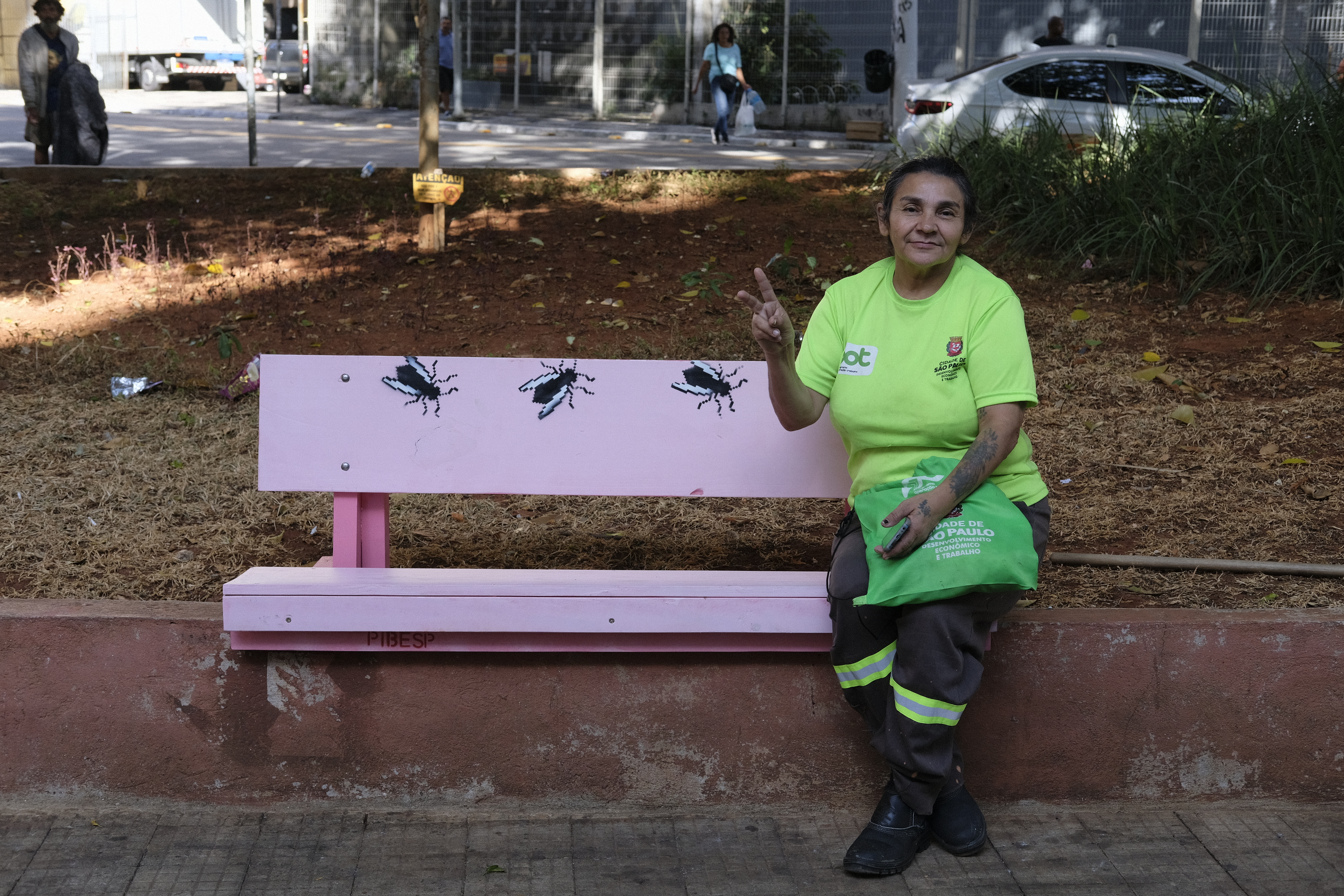
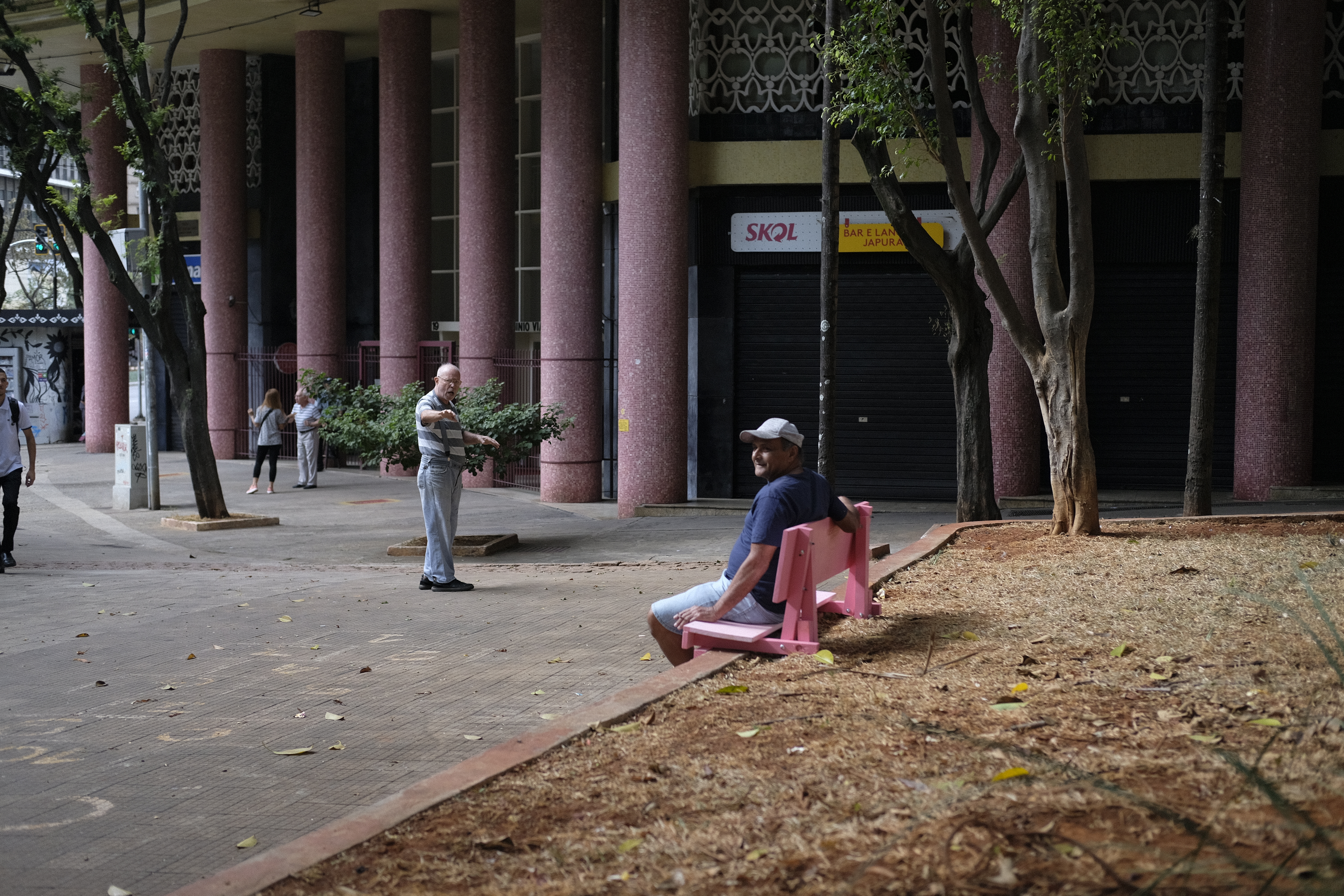

PIBESP 002.
Luca said "I'd rather have 1000 current PIBESPs than a single one
with a perfect design." For our second PIBESP, we doubled our
efforts, per the ancient game of rice. In an effort to reuse our
existing design, we found some tree planters that accomodated the
"stakes" and suggested a "virtual plaza" that could be called into
existence with some well placed benches. Around a dozen friends
showed up to my apartment for a day of hard work. Installation was
much harder this time, and we even used some candle wax to cover
some holes needed to fix the bench to the concrete. There's a great
demand and reward for work that isn't labor.
→

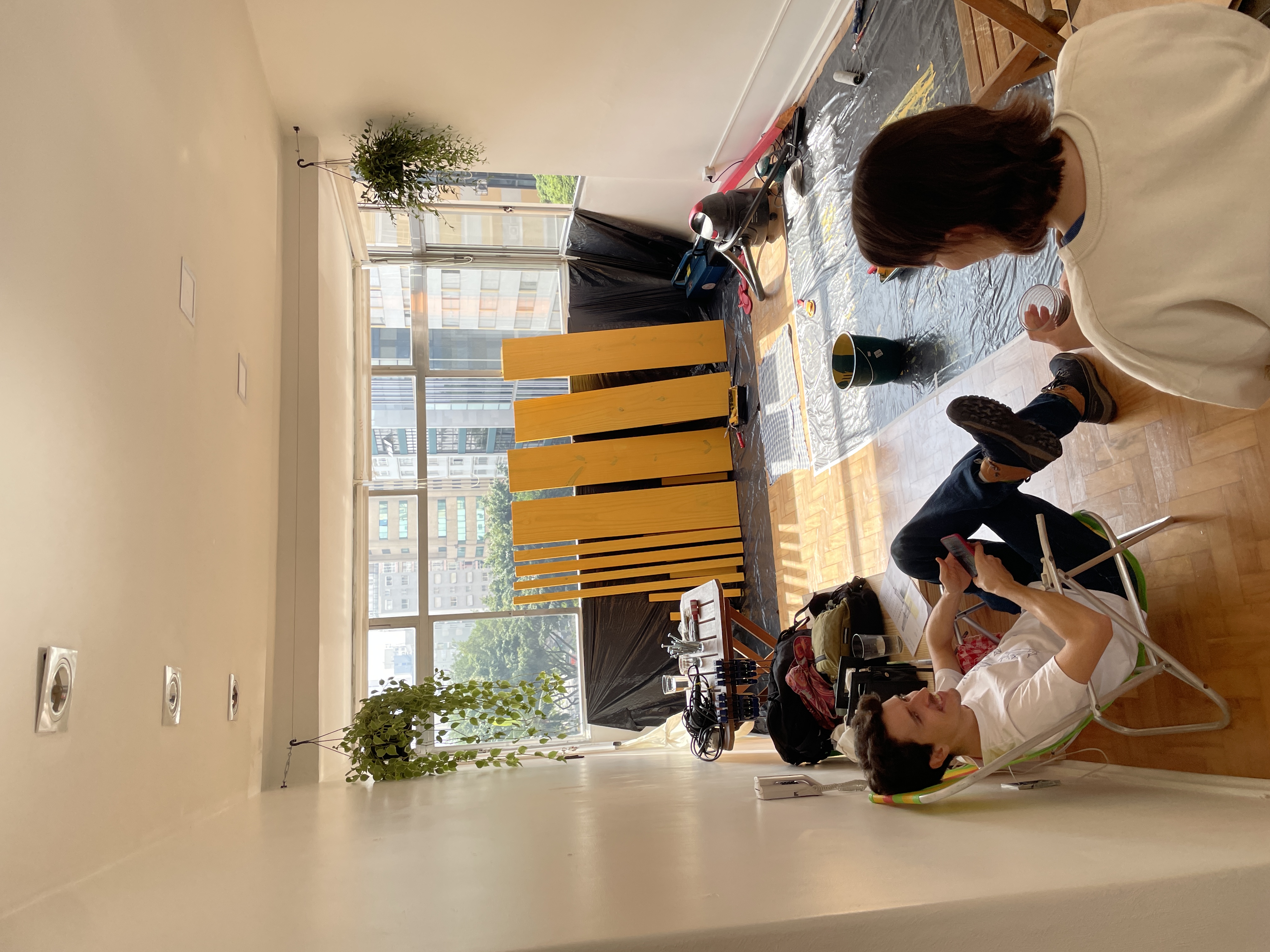
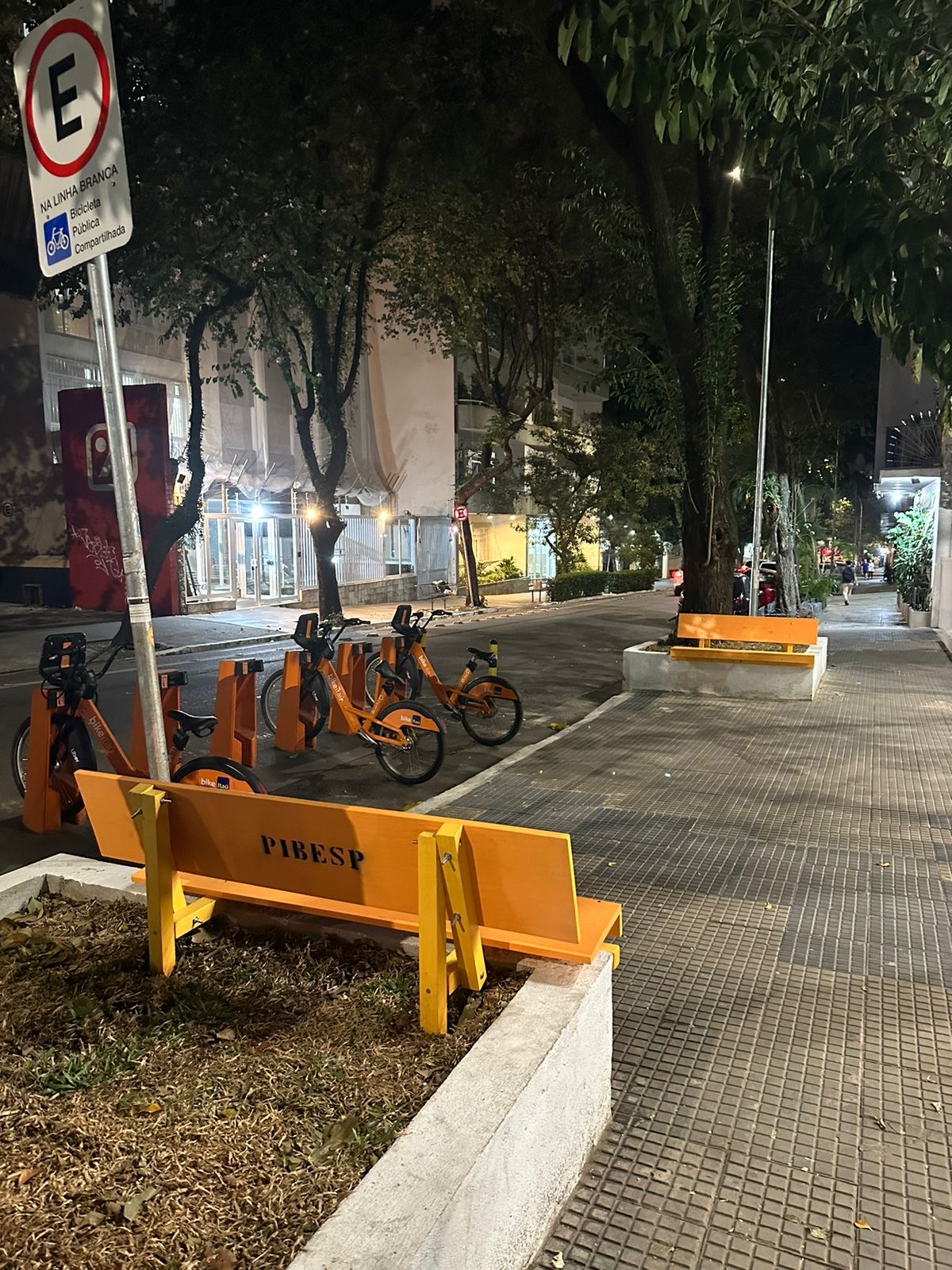
Cristóbal Sciutto, December 2024.